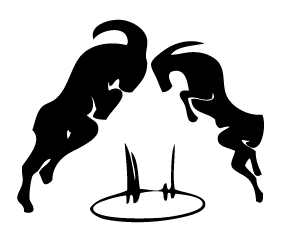
Abstract
“Discusses Jung's relationship with Nazi Germany and the allegations that he was anti-Semitic. His stated intent in assuming leadership of the General Medical Society for Psychotherapy was to internationalize the discipline and protect it from extinction in Germany. His behavior in this post fails to support charges of anti-Semitism and lends support to his professed motives.”
Abstract
“Discusses masochism as a religious cure of 'diseased' souls rather than as psychopathology. Seeking the shame and pain of penance is considered a move from egocentricity toward health. This dedication to suffering reflects a valuing of knowledge and the acknowledgment of 'shadow' aspects of personality. 'Mortification' is the alchemical production by torture of necessary change. Martyrdom is a pathological masochism which externalizes the source of suffering. A wounded ego produces martyr fantasies, while masochism comes from vitalizing humility. Martyrs manifest self-pity and self-justification; masochists recognize limitations and show self-compassion. Masochism is concluded to be simultaneously an intolerable suffering and a source of unmeasurable wealth.”
Abstract
“Supplements the article by about Jung's alleged anti-Semitism, which is based on Jung's statements regarding psychological differences between Aryans and Jews, especially the timing of these statements. It is contended that Jung's 'political naivete' actually represented his 'therapeutic approach,' which sought to transcend labeling, and his 'psychological faith' that critical reflection could be applied to solve political and ideological conflicts. The real answer to Jung's alleged anti-Semitism will be found in working on his uncompleted task of understanding the mythic and historic roots of reactions to ethnic differences”
Abstract
“Presents, in chronological order, a series of Jung's statements on the nature and functioning of 'the psychological.' Input from many academic disciplines and from diverse approaches to life are needed for understanding the psyche.”
Abstract
“Discusses Whorfian linguistic theory in relation to psychoanalytic and archetypal dream interpretation. Describing a dream involves changing a psychic image to words, and analysis of Greek, Latin, and German descriptions of the archetypal image of Dionysus illustrates this process. To reveal a Dionysian set of meanings, one must shift from semantic to phonetic associations. These reflect unconscious meanings and open personality to archetypal images. By restoring grammar to dreams, psychoanalysis binds an image to one meaning. Therapists' own world views may also limit possible dream meanings. Study of multiple meanings attached to similar phonetic patterns adds richness to interpretations and preserves many archetypal image-meanings. This view postulates the identity of accoustic image and meaning.”
Abstract
“Defines psychosis as an encounter with 'the intolerable image': a psychological condition so unendurable that change is mandated. The mythic character Medusa, whose appearance changed one to stone, illustrates the fixation-producing ability of the image. Delusion is the psychic essence of the psychophysiological reaction of psychosis. In paranoia, confrontation with a horrifying image produces a terror that transforms meaning and fixates the victim in unmovable delusion. Delusional expressions of affect and the multiplicity of personality are, restrictively, manic-depressive and schizophrenic states. The story of Medusa also illustrates the use of reflection—indirect gaze—in maintaining health. The invisibility which allowed mythic characters to explore the underworld is related to the 'functional blindness' of sleep. The management of Medusa's deadly countenance in mythology is discussed as a model for therapeutic intervention in psychosis.”